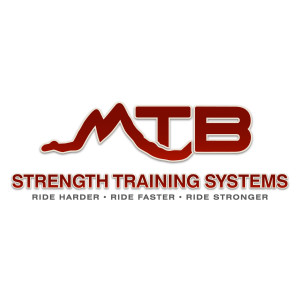
While pretty much anyone who has ridden a mountain bike realizes that grip strength is extremely important, it is a widely misunderstood subject when it comes to how to best improve it for the demands of trail riding.
This has led to an epidemic of riders who lack the functional grip strength needed to most effectively - and safely - interact with their bike through their hands. This shows up as wrist pain, hand numbness, elbow issues and reliance on “winged grips” to secure the hands on the handlebars.
The problem is that there is a very important aspect of grip training that most riders simply don’t know about, much less how to train for it. This aspect of grip strength in something that you don’t see talked about much in the fitness world in general, which means that if you haven’t heard about it then it isn’t your fault.
In today’s podcast I take a deep dive into the type of grip strength we need on the trail, why the conventional methods of grip training aren’t enough and what you can do to fill in this performance and health gap.
Show Notes:
Grip strength is an important factor in your life and riding. Off of the trail, grip strength is an indicator of functional core strength and longevity.
On the trail, grip strength is one of the few things that science has shown to have a direct impact on your riding performance. (The Science of Going Downhill Faster)
On a practical level, grip strength is a key factor in how you are able to translate your strength and power into the real world. Grip strength will also play a role in how well you are able to translate your technical skills to the bike.
As you can see, grip strength is extremely important and shouldn’t be something that you build by accident - you have to create the type and level of grip strength you want on purpose.
So what is “grip strength” and how do we improve it for the purpose of riding faster?
For most people the definition of grip strength revolves around the ability of the fingers to flex/ close either against resistance or to resist movement. (captains of crush type trainers or farmers walks)
Some people will include wrist movements like forearm curls or the stick and rope.
This is a good start but only part of the equation, and in some cases not even the most important.
This definition of grip strength leaves out one of the most important aspects of MTB specific grip strength - 3 dimensional wrist stability.
First, I think that there are a lot of great methods for building the pinching/ holding grip strength most people are familiar with. Exercises like Farmers Walks, Hangs from a Pull Up Bar and Plate Pinches are all excellent ways to build this type of grip strength.
Where I would say that most riders are lacking is in their ability to stabilize the wrists. The ability for the wrist to resist movement is a key factor in your ability to use your other grip types of grip strength.
On the bike it is often the limiting factor in the grip strength equation and the reason that so many riders suffer from wrist problems and pain on the bike.
Those winged grips are basically the industry's answer to this problem, which is to find a way to mechanically stabilize the wrist instead of advising riders to fix the actual problem.
To build this type of grip strength you need to incorporate leverage based training tools. These are training tools that have the weight at one end of the training tool and a handle at the other.
The Steel Mace and Heavy Indian Clubs (10+ pounds) are the two best tools available.
You can also use a misloaded adjustable dumbbell, heavy hammer or sledgehammer for a similar training effect.
You can use them either to train wrist stability directly or incorporate it into other exercises. Presses, Rows and Farmers Walks all take on an entirely new feel and challenge.
You can also use them to train Grip Strength Endurance, which is what you are really after as a rider. Indian Club Swings and Mace 360’s/ 10-2’s are amazing exercises for building the specific type of grip strength endurance you need on the bike.
On a side note, kettlebells are not a superior training tool for building this type of grip strength endurance. They only challenge your wrist stability in one plane while these tools challenge it in 3 dimensions - you have to keep your wrist from rotating or moving side-to-side or up-and-down.
I made the mistake for a long time of assuming that my kettlebell work was enough but it wasn’t - the 3 dimensional wrist strength you need on the trail is simply not trained as effectively with it.
So if you are not doing any grip training then you need to start - there is no way you can maximize your performance and fun with a weak grip. And if you are already doing something then make sure that you are training all of the important aspects of grip strength, especially the 3D wrist stability.
Until next time…
Ride Strong,
James Wilson
More Episodes
 2009-03-03
2009-03-03
 939
939
 2009-02-25
2009-02-25
 831
831
 2009-02-17
2009-02-17
 1.1k
1.1k
 2009-02-05
2009-02-05
 1.5k
1.5k
 2009-01-16
2009-01-16
 780
780
 2008-12-29
2008-12-29
 1.5k
1.5k
 2007-11-16
2007-11-16
 1.5k
1.5k
 2007-11-09
2007-11-09
 1.3k
1.3k
Create your
podcast in
minutes
- Full-featured podcast site
- Unlimited storage and bandwidth
- Comprehensive podcast stats
- Distribute to Apple Podcasts, Spotify, and more
- Make money with your podcast
It is Free
- Privacy Policy
- Cookie Policy
- Terms of Use
- Consent Preferences
- Copyright © 2015-2024 Podbean.com



